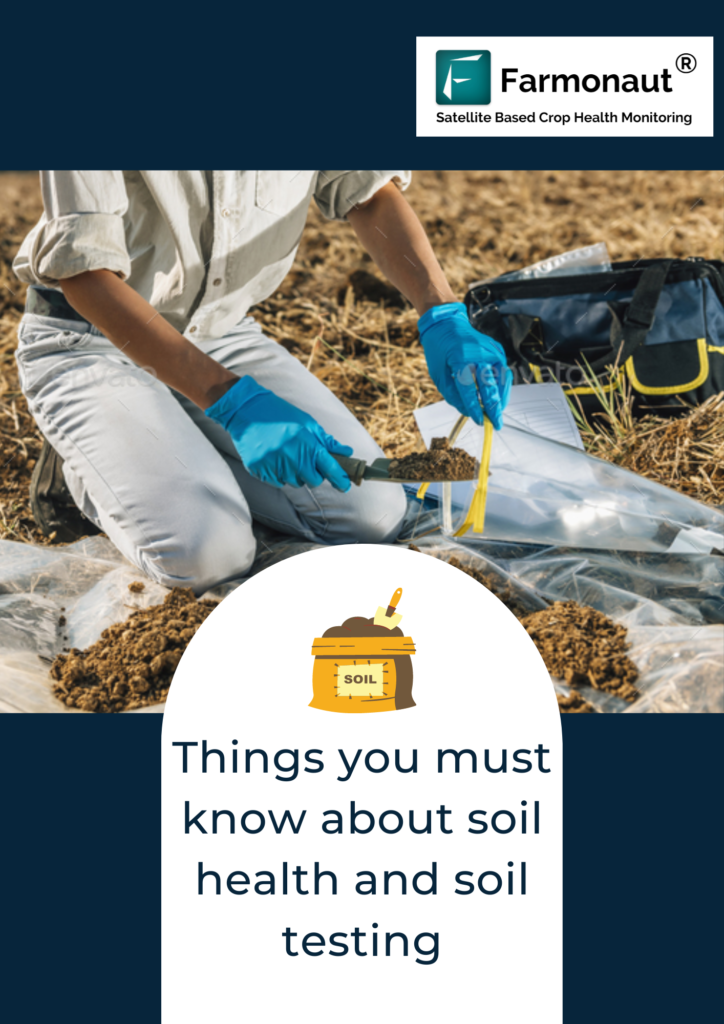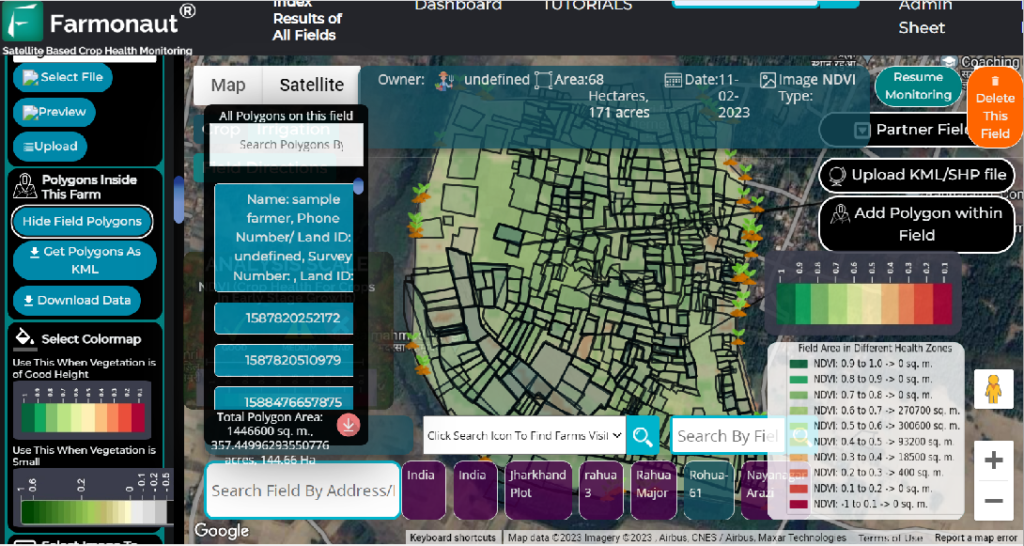Lentil: Area and Yield survey in UP and MP
Lentil: Area and Yield survey in UP and MP Farmonaut did Lentil satellite survey of Lentil in states of major districts Uttar Pradesh and Madhya Pradesh in the year 2022-23 which showed area of Lentil increased in Uttar Pradesh by 3% over last year in major districts and yield increased 7% over last year, and yield in Madhya Pradesh increased by 4% over last year in major districts. In Uttar Pradesh, Jhansi reported highest rise in area in area with rise of 15% over last year at 31.34 thousand hectares followed by Bharaich which rose 6% over last year at 55.67 thousand hectares while Jalaun reported largest fall in acreage by 6% to over last year at 29.45 thousand hectares followed by Mahoba which saw a fall of 2% over last year at 31.33 thousand hectares. Similarly, Bahraich showed highest rise in yield by 10% over last year at 937.97 Kg/Ha followed by Jalaun showing a rise by 7% over last year at 902.92 Kg/Ha while Lalitpur showed lowest increase by 2% over last year at 859.70 Kg/Ha followed by Shravasti which rose by 4% over last year at 865.53 Kg/Ha. The highest area was reported in Bahraich followed by Banda which showed increase of 1% in area over last year at 36.56 thousand hectares. Moreover, highest yield was reported in Jhansi which rose by 6% over last year at 978.78 Kg/Ha followed by Bahraich. Highest production was reported in Bahraich at 52.22 thousand tons followed by Banda at 32.02 thousand tons while the lowest production was reported in Shravasti at 16.72 thousand tonnes followed by Lalitpur at 18/33 thousand tonnes. The total area in major districts of UP rose by 3% over last year at 279.88 thousand hectares and average yield for the state rose by 7% and is reported at 905.51 Kg/Ha. Overall, the total production for 2022-23 in major districts of Uttar Pradesh was reported at 253.44 thousand tonnes. Similarly in Madhya Pradesh highest area was reported Sagar at 95.91 thousand hectares followed by Vidisha 71.32 thousand hectares while the lowest area was in Panna at 19.23 thousand hectares followed by Ashoknagar at 28.67 thousand hectares. In Madhya Pradesh, yield rose the most in Damoh by 11% over last year at 1136.36 Kg/Ha followed by Vidisha which rose by 7% over last year at 973.24 Kg/Ha while it fell most in Dindori by 5% compared to last year at 896.85 Kg/Ha followed by Narshinghpur which fell by 1% over last year at 900.19 Kg/Ha. Moreover, highest yield was reported in Damoh followed by Vidisha at 973.24 Kg/Ha. Similarly, highest production was reported at Sagar at 87.03 thousand tonnes followed by Vidisha at 69.41 thousand tons. Lowest production was reported in Panna at 17.72 thousand tonnes followed by Narshinhpur at 30.0 thousand tonnes. Average yield of the major districts Madhya Pradesh were reported higher by 4% over last year at 951.36 Kg/Ha. Overall, the total production for 2022-23 in Madhya Pradesh was reported at 396.69 thousand tonnes. Favourable weather in both Uttar Pradesh and Madhya Pradesh led to higher yield in both states. Farmonaut is revolutionizing agriculture through satellite data with a vision to help farmers and agriculture enthusiast worldwide in cost-effective way. By providing data on Crop Health, water stress, Weather forecasts and many more; the agriculture industry can make informed decisions about crop management. As climate change continues to posses’ risk on Agriculture industry, Farmonaut’s services can play a crucial role in mitigating risks. By utilizing Farmonaut’s platform, farmers an access up-to-date information on vegetation water stress, evapotranspiration, soil organic carbon and weather forecasts, allowing them to make data-driven decisions on fertilization, pest management, irrigation needs and advisory. This proactive approach to crop management can potentially help mitigate the effects of climate change, reduce the risk of lower crop yields, and decrease inflationary impacts on food prices. With over 1 million hectares of farmland monitored, Farmonaut is providing data to farmers and corporates worldwide. Some of our major clients/partners include Godrej Agrovet, ITC Limited, Coromandel International, Troforte Fertilizers, Australia, FFBS Germany and so many more!



